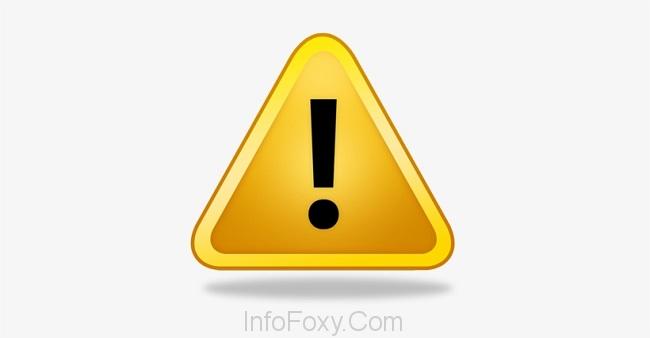In the digital age, internet security is paramount, and SSL (Secure Sockets Layer) certificates play a pivotal role in ensuring secure and encrypted data transmission between your web browser and a website’s server.
However, encountering the ERR_SSL_VERSION_OR_CIPHER_MISMATCH error can be perplexing for users.
In this comprehensive guide, we will delve into the meaning of the ERR_SSL_VERSION_OR_CIPHER_MISMATCH error, understand its causes, and explore effective troubleshooting steps to resolve it.

What is the ERR_SSL_VERSION_OR_CIPHER_MISMATCH Error?
The ERR_SSL_VERSION_OR_CIPHER_MISMATCH error is a common SSL/TLS-related error that occurs when your web browser is unable to establish a secure connection with a website’s server.
When this error occurs, your browser typically displays a message like “Your connection is not private” or “This site can’t provide a secure connection,” leaving users puzzled about the potential security risks.
Read Also:
Understanding the Causes
To effectively troubleshoot and resolve the ERR_SSL_VERSION_OR_CIPHER_MISMATCH error, it’s crucial to comprehend its common underlying causes:
- Outdated Browser: Using an outdated web browser can lead to compatibility issues with the latest SSL/TLS protocols and ciphers supported by websites.
- SSL/TLS Protocol Mismatch: The web server and your browser must agree on a common SSL/TLS protocol version for secure communication. If they can’t negotiate a compatible version, the error occurs.
- Cipher Suite Incompatibility: Similar to protocol mismatch, the server and browser must also agree on a cipher suite, which determines the encryption algorithms used. Incompatibility in cipher suites can trigger the error.
- Expired or Invalid SSL Certificate: If the website’s SSL certificate has expired or is invalid for some reason, your browser will not establish a secure connection, leading to the error.
- Firewall or Antivirus Interference: Overly aggressive firewall settings or antivirus software can sometimes interfere with SSL/TLS handshakes, causing the error.
Fixing the Error Message “ERROR: SSL Version/Cipher Mismatch”
The ERR_SSL_VERSION_OR_CIPHER_MISMATCH problem is straightforward to fix, despite the fact that it appears sophisticated and daunting to new users.
ERR SSL VERSION OR CIPHER MISMATCH can be fixed in six different ways.
1. Clearing the SSL
If you are unable to establish a reliable connection using Chrome, you should also try removing the SSL state. Perform the following procedures to check the SSL status on Windows browsers:
Step 1: Once you’ve clicked on the Google Chrome icon, navigate to the Settings icon. The Show advanced settings button can be clicked. Network is where you’ll find the Proxy Settings on your computer. You’re presented with the Web Properties window.
Step 2: Take a look at the Content section. After selecting Clear SSL state, click OK. Chrome should be relaunched in the final step.
2. SSL/TLS Versions
Please keep in mind that this will allow access to protocols that are no longer secure. This is something you take on at your own peril.
Step 1: To begin, open Chrome on your computer. When you’re done, you’ll see three dots in the upper-right corner, so click on them. The next step is to type “proxy” into the search field in Settings.
Step 2: Next, select the Open Proxy Options option from the drop-down menu, if available. Navigate to the Advanced tab in the menu bar.
Step 3: At this point, mark all SSL/TLS versions.To complete this step, click the Apply button at the bottom-right of the window. Google Chrome needs to be restarted at this point.
3. Verify That Your Internet Is Working
This error is typically the result of a malfunctioning internet connection. You should make sure that your internet service is working properly before contacting your Internet Provider for assistance.
4. Verify the SSL Certificate
First and foremost, you should examine the SSL certificate if the client or server doesn’t support the same SSL protocol version and cypher suite.
Chrome allows you to view certificates and undertake in-depth investigation and evaluation of free online tools. The one provided by Server SSL Labs is the best option.
5. Removing Temporary Internet Files and Cookies
After experiencing an online error, it is critical to delete your browser’s cache and cookies, as these are typically the source of all kinds of issues. Depending on the internet browser you are using, this step may be different.
Using a search engine is the best way to learn how to clean your internet explorer’s data if you’ve never done so before. To get to the clear browsing data page, you could press CTRL + SHIFT + DELETE.
Read Also:
Conclusion
Try reinstalling the internet browser and the extensions that are already installed if none of the aforementioned fixes work.
Please keep in mind that if you’re still running an older version of Windows, you should seriously consider updating, even though some of the newer security features, such as TLS 1.3 and the most recent cypher suites, aren’t officially supported by the OS.



















